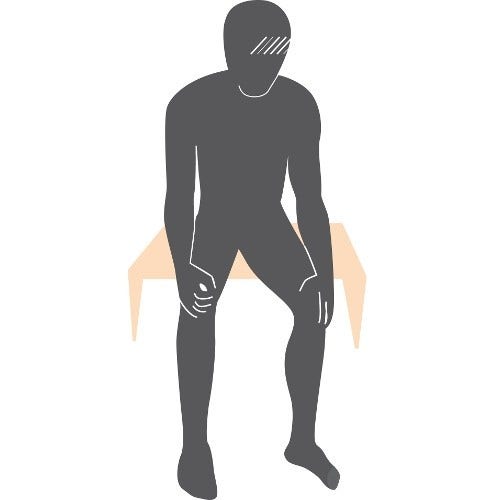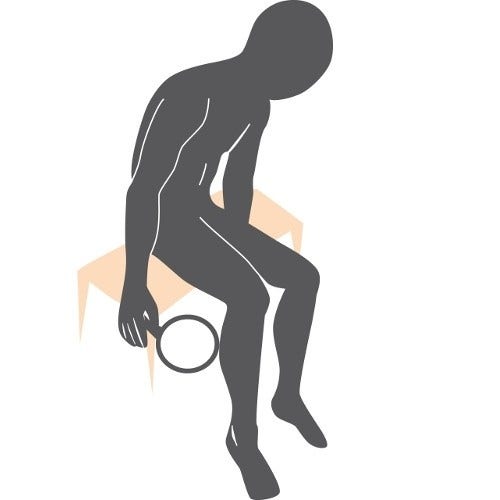How to Do a Skin Self-Exam
The American Cancer Society does not have guidelines for the early detection of skin cancer. However, many doctors and other experts recommend that everyone check their own skin regularly. Usually, doing a skin self-exam once a month is recommended. Talk to your doctor about how often you should check your skin.
Regular skin self-exams are especially important for people who are at higher risk of skin cancer, such as people with reduced immunity, people who have had skin cancer before, people who have lots of moles or other skin spots, and people with a strong family history of skin cancer.
What you need for a skin self-exam
The best time to check your own skin is after a bath or shower. Here’s what you’ll need to do a skin self-exam that is as thorough as possible at home:
- A well-lit room
- A full-length mirror
- A hand-held mirror to look at areas that are hard to see
- A spouse, partner, or close friend or family member to help you with hard-to-see areas like your back or scalp.
The first time you check your skin at home:
- Spend time carefully going over the entire surface
- Learn the pattern of moles, blemishes, freckles, and other marks on your skin so that you’ll notice any changes next time.
- Be sure to show your doctor any areas that concern you.
Skin self exam steps
Follow these step-by-step instructions to examine your skin at home:
Face the mirror

Check your face, ears, neck, chest, and belly. Women will need to lift their breasts to check the skin underneath.

Check your underarm areas, both sides of your arms, the tops and palms of your hands, in between your fingers, and under your fingernails.
Sit down

Check the front of your thighs, shins, tops of your feet, in between your toes, and under your toenails.

Now use a hand mirror to look at the bottoms of your feet, your calves, and the backs of your thighs, first checking one leg and then the other.

Use the hand mirror to check your buttocks, genital area, lower and upper back, and the back of your neck and ears. Or it may be easier to look at your back in the wall mirror using a hand mirror.

Use a comb or hair dryer to part your hair so that you can check your scalp.
What should I look for?
Check any moles, blemishes, or birthmarks from the top of your head to your toes. If you look at your skin regularly, you will know what’s normal for you.
In thinking about and looking for possible skin cancers, many are found on parts of the body that tend to get more sun, such as the face, head, neck, and arms. But skin cancers can occur anywhere on the body.
Not all skin cancers look the same. In fact, skin cancers can show up in many shapes and sizes. Sometimes they might even look like other non-cancerous skin conditions.
Some of the more common ways in which skin cancers can appear include:
- A new, expanding, or changing growth, spot, or bump on the skin
- A sore that bleeds and/or doesn’t heal after several weeks
- A rough or scaly red patch, which might crust or bleed
- A wart-like growth
- A mole (or other spot on the skin) that’s new or changing in size, shape, or color
- A mole with an odd shape, irregular borders, or areas of different colors
But it’s important to understand that these are not the only ways skin cancer can appear. To learn more about what skin cancer might look like, see:
- Skin Cancer Image Gallery
- Signs and Symptoms of Basal and Squamous Cell Skin Cancers
- Signs and Symptoms of Melanoma Skin Cancer
- Signs and Symptoms of Merkel Cell Carcinoma
If you find something suspicious on your skin
Whether you’re doing a skin self-exam or just looking at your skin at any time, you might notice something that has just appeared or that has recently changed. Maybe it’s a mole that looks new or different. Maybe it’s an area that’s dry and scaly and keeps coming back. No matter what you notice when you’re looking at your skin, if you see anything that concerns you, be sure to have it checked by a doctor.
If you can’t see the doctor right away, you might want to take close-up photos of the area every few days or so. These photos might help your doctor see if the area is changing when you are able to get an appointment.
Once you’re at the appointment, if the doctor suspects you might have skin cancer, they will likely:
- Ask you about symptoms, such as when the area or mark first appeared, if it has changed in appearance, and if it’s painful, itchy, or bleeding
- Ask about past exposures to the sun and tanning devices, your history of any sunburns, and if you or anyone in your family has had skin cancer
- Examine and measure the area you’re concerned about
- Note the size, shape, color, and texture of the area in question, and if it is bleeding, oozing, or crusting
- Check the rest of your body if they think there is a reason to do so
If you're being seen by your primary care doctor (or their health care team), you may be referred to a dermatologist (a doctor who specializes in skin diseases). A dermatologist has special tools to look at the area more closely.
If the doctor thinks that a suspicious area might be skin cancer, a sample of skin from that area will be removed and looked at under a microscope. This is called a skin biopsy. There are many ways to do a skin biopsy. The doctor will choose one based on the suspected type of skin cancer, where it is on your body, the size of the affected area, and other factors. For more detailed information on skin biopsies, see Tests for Melanoma Skin Cancer or Tests for Basal and Squamous Cell Skin Cancer.
- Written by
- References

The American Cancer Society medical and editorial content team
Our team is made up of doctors and oncology certified nurses with deep knowledge of cancer care as well as editors and translators with extensive experience in medical writing.
American Academy of Dermatology (AAD). Check Your Partner. Check Yourself. Accessed at https://www.aad.org/public/diseases/skin-cancer/check-your-partner on June 26, 2024.
American Academy of Dermatology (AAD). Find Skin Cancer: How to Perform a Skin Self-Exam. 2023. Accessed at https://www.aad.org/public/diseases/skin-cancer/find/check-skin on June 26, 2024.
Skin Cancer Foundation. Self-Exams Save Lives. 2024. Accessed at https://www.skincancer.org/early-detection/self-exams/ on June 26, 2024.
US Preventive Services Task Force (USPSTF). Final Recommendation Statement: Skin Cancer Screening. 2023. Accessed at https://www.uspreventiveservicestaskforce.org/uspstf/recommendation/skin-cancer-screening on June 26, 2024.
Last Revised: June 26, 2024
American Cancer Society medical information is copyrighted material. For reprint requests, please see our Content Usage Policy.
American Cancer Society Emails
Sign up to stay up-to-date with news, valuable information, and ways to get involved with the American Cancer Society.


